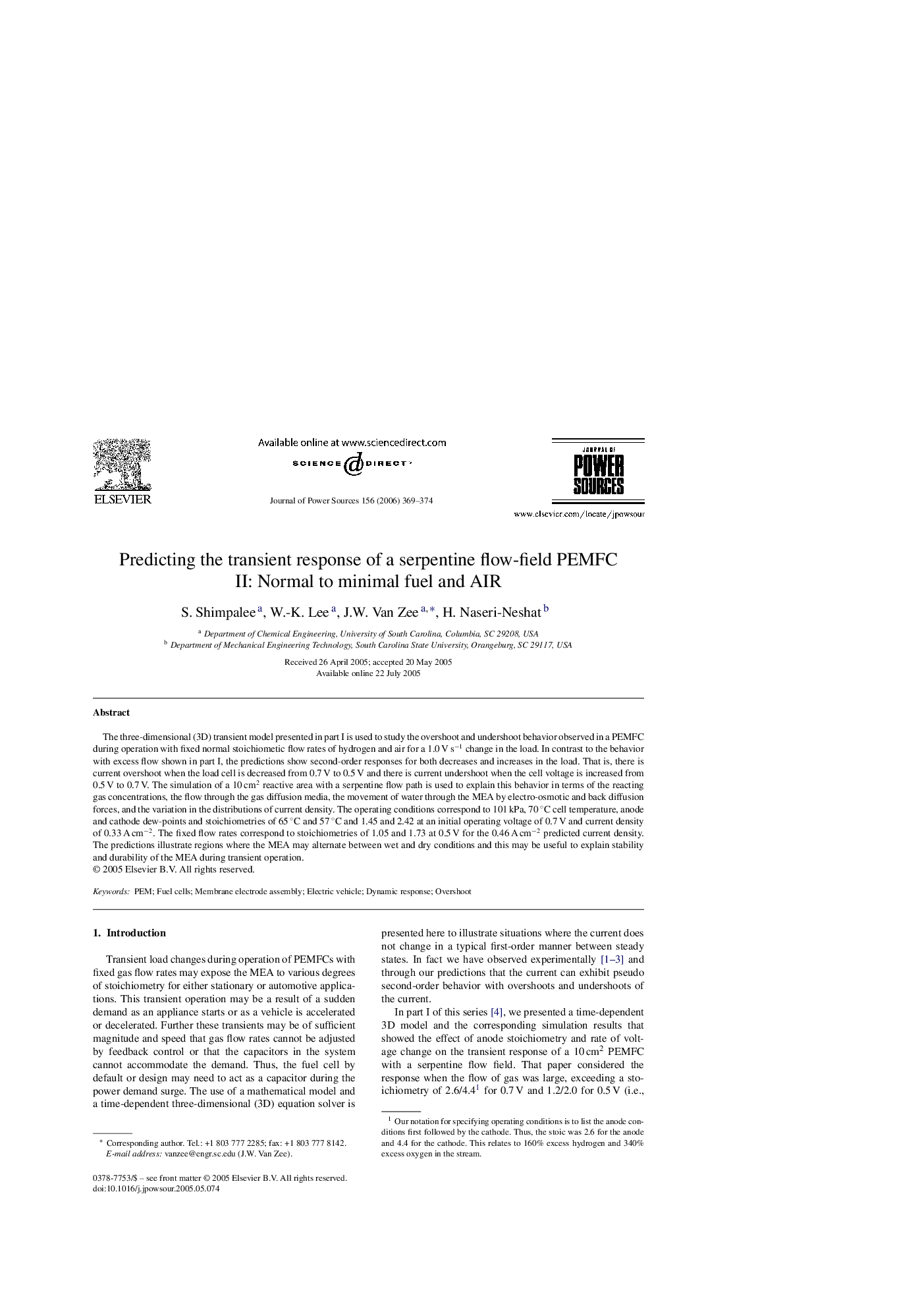| Article ID | Journal | Published Year | Pages | File Type |
|---|---|---|---|---|
| 1295040 | Journal of Power Sources | 2006 | 6 Pages |
The three-dimensional (3D) transient model presented in part I is used to study the overshoot and undershoot behavior observed in a PEMFC during operation with fixed normal stoichiometic flow rates of hydrogen and air for a 1.0 V s−1 change in the load. In contrast to the behavior with excess flow shown in part I, the predictions show second-order responses for both decreases and increases in the load. That is, there is current overshoot when the load cell is decreased from 0.7 V to 0.5 V and there is current undershoot when the cell voltage is increased from 0.5 V to 0.7 V. The simulation of a 10 cm2 reactive area with a serpentine flow path is used to explain this behavior in terms of the reacting gas concentrations, the flow through the gas diffusion media, the movement of water through the MEA by electro-osmotic and back diffusion forces, and the variation in the distributions of current density. The operating conditions correspond to 101 kPa, 70 °C cell temperature, anode and cathode dew-points and stoichiometries of 65 °C and 57 °C and 1.45 and 2.42 at an initial operating voltage of 0.7 V and current density of 0.33 A cm−2. The fixed flow rates correspond to stoichiometries of 1.05 and 1.73 at 0.5 V for the 0.46 A cm−2 predicted current density. The predictions illustrate regions where the MEA may alternate between wet and dry conditions and this may be useful to explain stability and durability of the MEA during transient operation.
